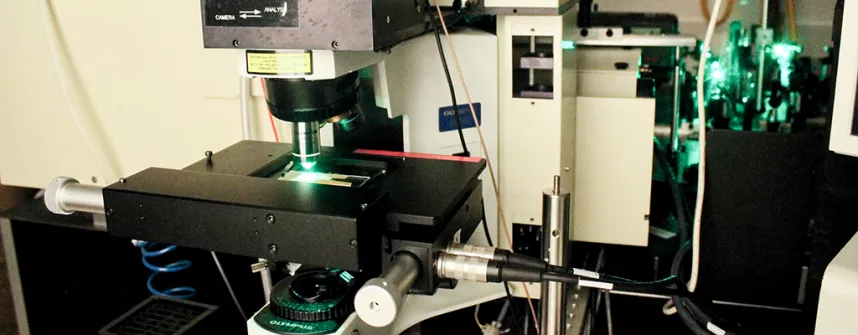Characterizing microplastics in water bodies: New research project at Jacobs University Bremen
July 16, 2020
The pollution of seas, lakes, and rivers with plastic waste is a major environmental problem. Over time, objects made of plastics are mechanically broken down into their smallest particles, which can then be found all over the world as microplastics. How toxic are these particles? The research group of Dr. Arnulf Materny, Professor of Chemical Physics at Jacobs University, wants to develop a method that allows the rapid analysis of these tiny particles and their properties – using laser technology.
, New research project at Jacobs University Bremen: The research group of Dr. Arnulf Materny wants to analyze microplastics and their properties using laser technology. (Source: Arnulf Materny)Via the food chain, microplastic particles, which can be smaller than a thousandth of a millimeter, are becoming a health risk for humans. Inflammatory reactions caused by microplastics embedded in tissue have already been observed. Consequences, such as the development of cancer, are feared.
In a project funded by the German Federal Ministry for Economic Affairs and Energy, Prof. Materny's research group will investigate a very important aspect of the microplastics problem in cooperation with different industrial and research partners from Germany and Finland. Synthetic materials, and thus microplastic particles, accumulate biofilms on their surfaces relatively quickly in water. These consist of algae and bacteria, for example, but multi-resistant germs have also already been observed.
Apart from the possible additional hazard posed by the microorganisms or bound toxic substances on the surfaces, other aspects are also of interest. On the one hand, the biofilms lead to microplastic particles being considered food by marine organisms such as fish and are therefore ingested even more often. On the other hand, the biofilm could also lead to a more rapid degradation of the plastic, thereby having a positive effect.
Using the Raman spectroscopy, the biofilms and their interaction with the microplastic particles will be analyzed. Laser light is scattered from the surfaces of the particles. Due to an interaction of the light with the biofilm molecules a color shift of the light spectrum occurs. This is then used to determine molecular properties. The work group will use special Raman techniques, which will both suppress interfering signals and amplify the signals.
Dr. Patrice Donfack will carry out the work in Materny’s group in collaboration with the other project partners. The aim is to create an analysis system that will also enable other scientists or authorities to better assess the microplastic problem and to quickly identify current stresses.
